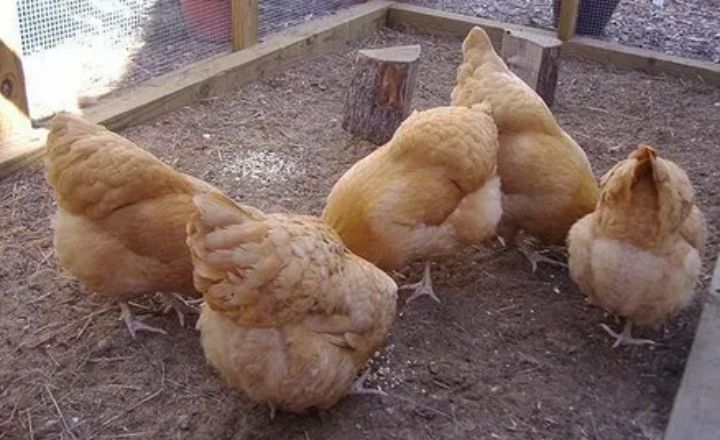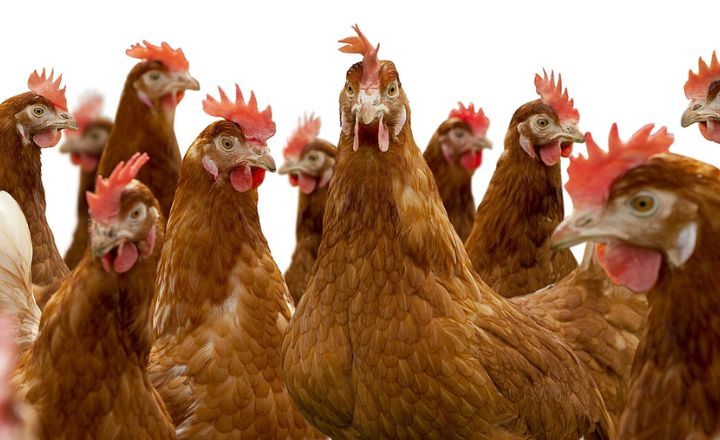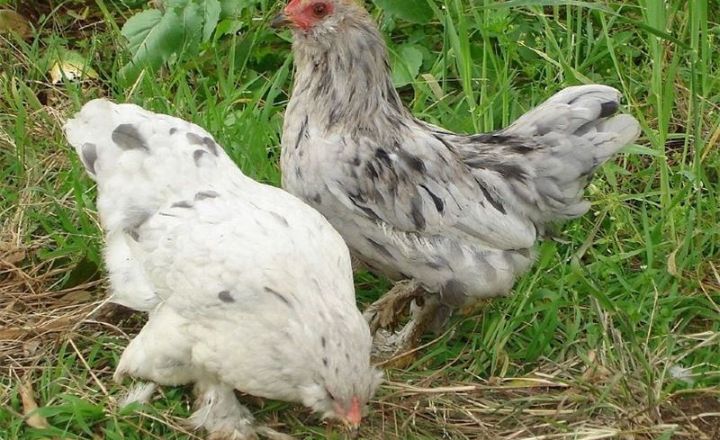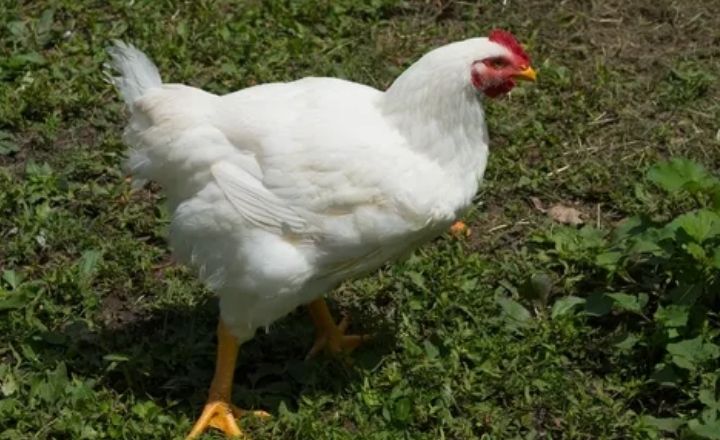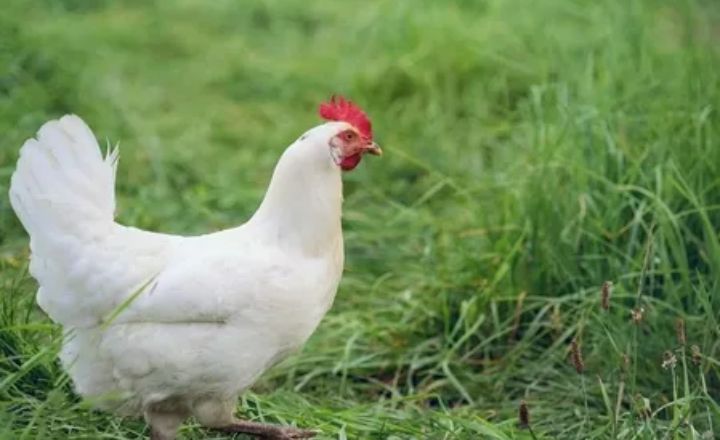Buff Orpington Chicken Breed- A Useful Guide
In the world of poultry, few breeds command attention quite like the Buff Orpington chicken breed. With their luxurious golden plumage and gentle demeanor, these chickens seem to step straight out of a pastoral painting, embodying both beauty and practicality.
Originally developed in the late 19th century in England, the Buff Orpington has captured the hearts of backyard chicken enthusiasts and farmers alike, earning a reputation not just for their striking appearance but also for their adaptability and productivity.
As you delve into the world of Buff Orpingtons, you’ll discover that they are more than just a pretty face; they are prolific layers with sweet temperaments that make them ideal companions for families and hobbyists. Their calm nature stands out in any flock, fostering harmonious relationships with humans and other birds alike.
Whether you’re considering starting your own backyard coop or simply seeking to expand your knowledge about this remarkable breed, join us as we explore the rich history, unique characteristics, and undeniable charm of the Buff Orpington chicken.
Buff Orpington Chicken Breed History
The Buff Orpington chicken, known for its rich golden feathers and friendly demeanor, has a fascinating lineage that traces back to late 19th century Britain. This breed was meticulously developed to excel in both egg production and as a substantial meat bird, appealing to farmers seeking versatility on their homesteads.
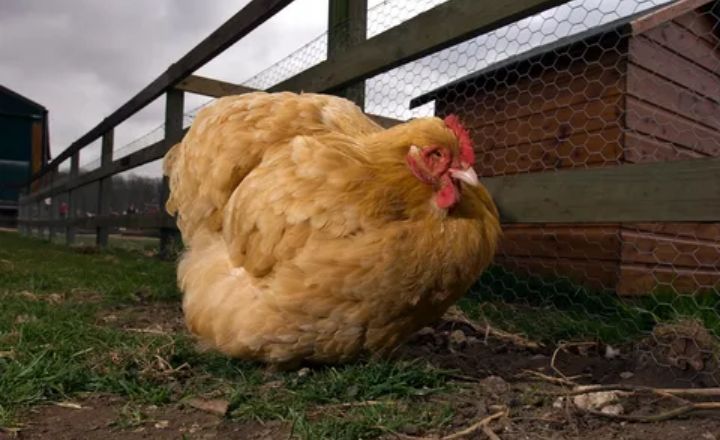
By crossbreeding the sleek Minorca with the sturdy Black Plymouth Rock, breeders aimed to create a fowl that could thrive in various environments while providing reliable yields a dual purpose powerhouse indeed.
As they gained popularity in the early 1900s, Buff Orpingtons became synonymous with backyard farming culture, valued not just for their impressive size but also for their gentle temperament. These birds typically weigh around 8 to 10 pounds when fully grown, making them one of the more sizable breeds available today.
Their docile nature also means they tend to get along well with children and other animals, perfect traits for those looking to enrich their home environment with feathered companions. In essence, the Orpingtons historical significance continues to resonate today as an embodiment of sustainable farming practices and family friendly agriculture.
Are Buff Orpington Chickens A Heritage or Hybrid Breed?
Buff Orpington chickens are indeed considered a heritage breed. Originally developed in the late 19th century, they were bred for their dual purpose qualities providing both meat and eggs. The Buff variety was first recognized by the American Poultry Association (APA) in 1902, followed by the acknowledgment of other color varieties such as Black, White, and Blue over the subsequent decades.
Heritage breeds like the Buff Orpington maintain traditional characteristics and genetic diversity, which are essential for sustainable poultry farming.
Buff Orpington Breed Appearance
The Buff Orpington breed stands out not only for its friendly demeanor but also for its striking appearance. The most recognized variety buff (yellow-golden) displays a warm, rich plumage that shimmers under the sunlight, creating an inviting image in any backyard setting.
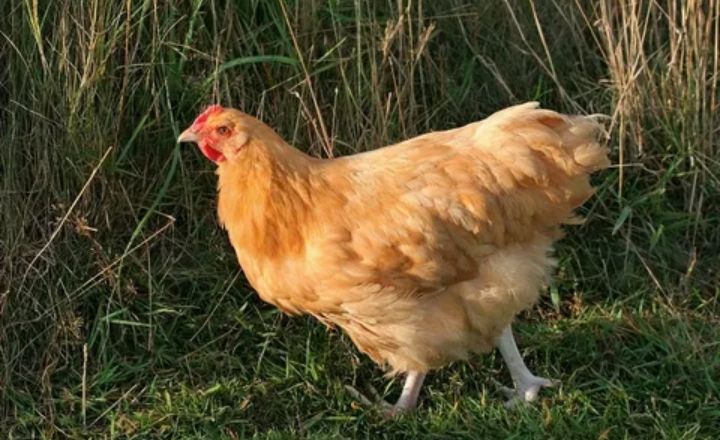
These birds are characterized by their broad body and fluffy feathers that lend them a soft, approachable look, making them favorites among poultry enthusiasts and families alike.
In terms of buff orpington size is very interesting , Buff Orpingtons are medium to large birds with a robust frame that gives them a solid presence. Their single comb features five well defined points and attractive detail against their bright red complexion which softens their overall silhouette while contributing to their charming character.
The vivid red wattles and earlobes further enhance this visual appeal, providing an eye-catching contrast with their golden plumage. All these characteristics combined create an unforgettable portrait of comfort and allure in the world of poultry breeding.
How Much Do Buff Orpington Chickens Weigh?
Buff Orpington chickens are known for their friendly temperament and beautiful, fluffy plumage. On average, adult roosters typically weigh around 10 pounds, while hens are slightly lighter at about 8 pounds.
It’s important to note that these weights can vary depending on the individual bird’s genetics and overall health. The fluffiness of their feathers often gives them a larger appearance than their actual weight.
For those interested in smaller versions of this breed, Bantam Buff Orpingtons are available and weigh significantly less, around 3.5 pounds each. These miniature chickens maintain the same charming characteristics as their larger counterparts but are better suited for those with limited space or who prefer smaller fowl in their flock.
Whether you’re raising them for eggs or companionship, Buff Orpingtons make a delightful addition to any backyard farm.
Average Lifespan of Buff Orpington Chickens
Buff Orpington chickens are celebrated not only for their delightful disposition and stunning plumage but also for their impressive lifespan of around eight years when kept in a backyard setting.
This longevity is largely attributed to the care and attention they receive within a home environment, which allows them to thrive away from the stressors found in more commercial settings.
While many chicken breeds typically live between three to seven years, Buff Orpingtons often enjoy a few extra years due to reduced exposure to diseases, predators, and other hazards.
As these gentle giants age and shift into their twilight years, it’s important for owners to recognize that production capabilities decrease significantly over time. The average reduction in egg laying from Buff Orpingtons may occur after just two to three years; this decline is linked directly with aging rather than health issues alone.
By understanding this cycle of life and adjusting care accordingly focusing on diet enrichment and social interaction owners can greatly enhance not only the quality of life but also maximize those precious golden years shared with these charming birds.
Acknowledging these unique characteristics allows chicken enthusiasts deeper insight into their remarkable resilience, a reminder of how proper husbandry can extend the joys of poultry keeping well into what can be considered an older age bracket for chickens.
Buff Orpington Chicken Egg Color
orpington chicken characteristics are very interesting but eggs is one very interesting essay. Buff orpington egg color is very interesting. Buff Orpington chickens are Their egg color, ranging from light to deep brown, reflects their robust genetics and overall health.
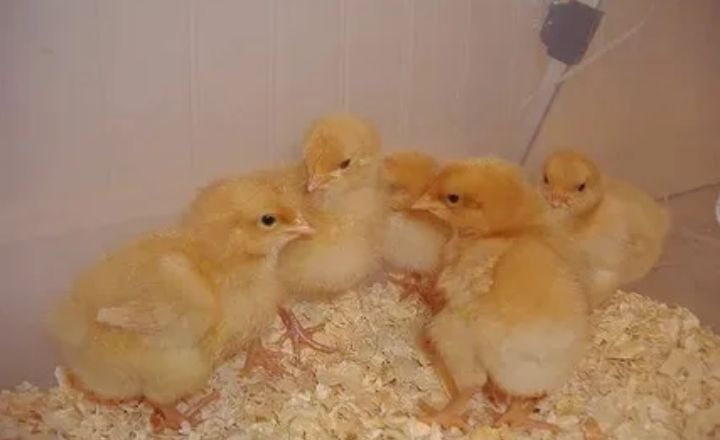
This breed thrives in a range of environments and exhibits remarkable laying capabilities, making them favorites among backyard poultry enthusiasts.
While Buff Orpingtons stand out with their beautiful brown eggs, several other chicken breeds can surprise you with shades that verge on pink or vary capably within the brown spectrum.
The Easter Egger offers a delightful twist, often laying pastel colored eggs that can include soft pinks alongside the traditional blues and greens.
Breeds like the Red Ranger or Barnevelder can occasionally produce unique shades of brown tinged with pinkish hues depending on their diet and environment proof that the colors of your egg basket can be as varied as your flock! So, whether you’re raising Buff Orpingtons or diversifying into other colorful layers, you’re guaranteed an eye catching collection every time you gather those fresh eggs.
How Many Eggs Do Buff Orpington Chickens Lay?
buff orpington eggs production is the same as other chicken. Buff Orpington chickens are also appreciated for their egg-laying capabilities. Typically, these hens start laying eggs around 20 to 24 weeks of age, with some individuals beginning a bit earlier. Once they reach maturity, Buff Orpingtons can lay approximately 180 to 200 eggs per year under optimal conditions.
It’s important to note that the egg production of Buff Orpingtons may gradually decrease as they age. On average, you can expect a decline of about 10 to 15 eggs per year after their peak laying period.
Despite this decline, many chicken keepers still value them for their consistent production and the quality of their medium sized brown eggs throughout their prime years.
Breeding Buff Orpington Chickens
Buff Orpington chickens embody the perfect blend of beauty and practicality for any poultry enthusiast. With their sizable, fluffy bodies and warm, golden feathers, these birds create a striking addition to any homestead while also excelling in maternal roles.
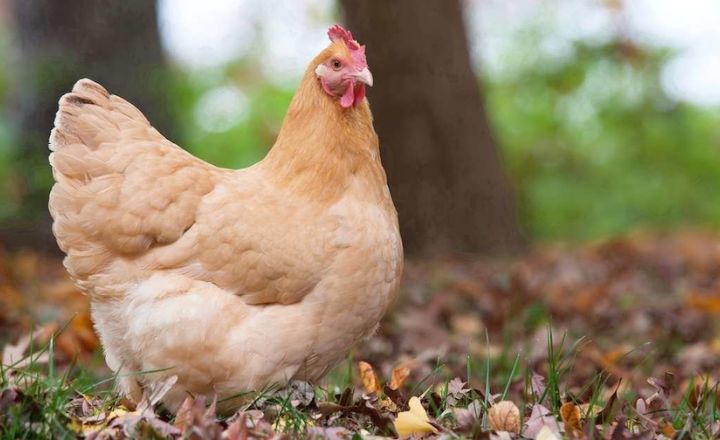
Their natural instinct to brood is such that they often prefer sitting on their eggs rather than roaming around the coop, an endearing characteristic that makes them excellent mothers.
Just imagine having a Buff Orpington clucking softly as she faithfully nurtures her clutch of buff Orpington chicken eggs, patiently waiting for new life to emerge.
Breeding buffs can be an incredibly rewarding experience as you witness firsthand how resilient and capable these hens are at fulfilling their reproductive roles without human interference. This breed doesn’t just lay beautiful eggs; they also possess the remarkable ability to incubate them efficiently.
Users have reported not only high hatch rates but also strong chicks displaying vigor and health upon arrival testament to the Buff Orpingtons role as a consistently reliable parent.
By allowing nature to take its course with minimal intervention, you not only cultivate a deeper understanding of poultry husbandry but foster an appreciation for this remarkable breed’s nurturing qualities that shine through season after season.
Are Buff Orpington Chickens Broody?
Yes, Buff Orpington chickens are indeed known for their broody nature and make excellent mothers. This breed has a strong instinct to hatch eggs and care for chicks, which can be quite beneficial if you’re looking to raise them naturally. Their calm demeanor and nurturing behavior contribute to their reputation as reliable brooders, making them a popular choice among backyard chicken keepers.
It’s worth noting that while their broody tendencies can be advantageous for hatching chicks, they may also interfere with consistent egg production. When a hen goes broody, she often stops laying eggs altogether in favor of sitting on her clutch.
So if you have a Buff Orpington like Edna who frequently goes broody, be prepared for some fluctuations in your egg supply! Overall, their maternal instincts are a wonderful trait that many chicken enthusiasts appreciate.
Are Buff Orpington Chickens Hardy?
Yes, Buff Orpington chickens are known for their hardiness, making them a popular choice among poultry enthusiasts. They are well suited to various climates, exhibiting both cold hardiness and heat tolerance. Their dense feathering helps them stay warm in winter, while their adaptability allows them to cope with warmer temperatures as long as proper care is provided.
To keep your Buff Orpingtons cool during hot weather, it’s essential to ensure they have constant access to clean water. Hydration is crucial for preventing heat stress. Additionally, providing shaded areas in their coop or run can help them escape direct sunlight.
You might also consider adding fans or misters to the coop for improved airflow and cooling. Regularly checking their combs and wattles for signs of overheating can help you address any issues before they escalate.
Common Buff Orpington Health Risks
Buff Orpington chickens, renowned for their hardy nature and beautiful plumage, are generally robust but can face specific health challenges in extreme weather conditions. While they are heat tolerant compared to some breeds, the potential for heat stroke cannot be overlooked.
The abundance of feathers that makes them so visually appealing can also lead these birds to struggle in scorching temperatures. It’s essential for chicken owners to implement strategies that ensure their Buffs remain comfortable and hydrated during hot spells.
One effective method is providing plenty of cool, shaded spaces where the hens can escape direct sunlight throughout the day. Additionally, incorporating vitamins into their drinking water not only supports overall health but also enhances hydration levels when temperatures soar.
This simple adjustment helps bolster their immune systems while ensuring they are equipped to handle rising temperatures without succumbing to dehydration or heat stress. Keeping a close eye on your Buff Orpington flock during summer months will go a long way in preserving both their well being and productivity!
Are Buff Orpington Chickens Good For Meat Production?
Yes, Buff Orpington chickens are indeed considered good for meat production. Their larger size and robust build make them ideal candidates for roaster chickens, typically reaching a suitable weight for processing by around five months of age. This breed is known for its plump body and broad breast, which contribute to a higher yield of meat compared to many other chicken breeds.
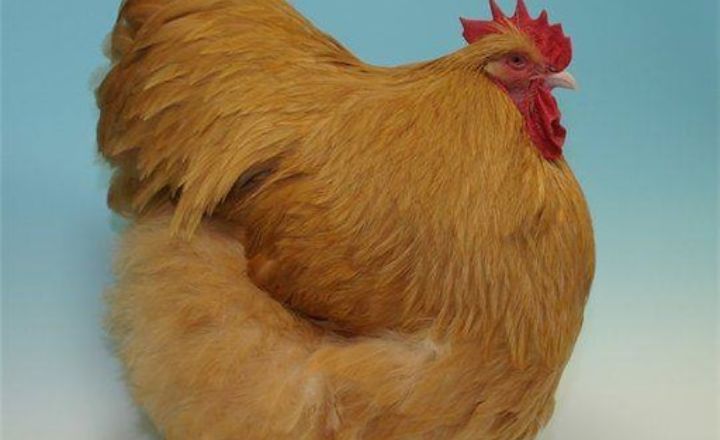
If you’re looking for a dual purpose breed that excels in both egg laying and meat production, Buff Orpingtons are an excellent option.
Are Buff Orpington Chickens Noisy?
Buff Orpington chickens are generally considered to be one of the quieter breeds, making them a popular choice for urban farms and backyard coops in populated neighborhoods. Hens, in particular, are known for their calm demeanor and soft clucking, which is less disruptive compared to other breeds. This makes them suitable for environments where noise levels need to be kept to a minimum.
It’s important to note that while hens are relatively quiet, roosters can be quite vocal. Roosters tend to crow frequently throughout the day, which can become an issue in densely populated areas.
If you’re considering keeping Buff Orpingtons in such neighborhoods, it’s advisable to stick with hens rather than roosters to maintain peace with your neighbors. If you’re looking for a breed that won’t add much noise to your surroundings, Buff Orpingtons are an excellent choice among chicken breeds.
Buff Orpington Chicken Temperament
Buff Orpington chickens are often celebrated for their exceptional temperament, making them an ideal choice for families and novice chicken keepers alike. Their gentle demeanor allows them to thrive in environments where they are handled frequently; these birds enjoy being cuddled and will often snuggle up against their owners.
This affectionate nature not only fosters a strong bond between the birds and their caretakers but also offers a unique opportunity for enrichment, as the chickens benefit from regular human interaction.
Buff Orpingtons possess a remarkable ability to adapt well around children. Their docility means that kids can confidently engage with these charming birds without fear of aggressive behavior.
Instead of shying away or displaying skittishness, Buff Orpingtons tend to follow young ones closely, showcasing an innate curiosity that can lead to delightful moments of connection and discovery. By incorporating these friendly fowl into family life, you’re not just raising chickens; you’re creating memorable experiences filled with laughter and warmth that will last a lifetime.\
Buff Orpington Chicken Housing Requirements
Buff Orpington chickens are renowned for their hardiness, making their housing essential to ensuring their well-being throughout the seasons. Each bird requires at least 4.5 square feet of space within a draft free coop; this provides them a cozy retreat that keeps them protected from harsh winter winds and frigid temperatures, which may dip as low as -22°F with wind chill. These resilient birds thrive in unheated environments, showcasing their natural adaptability even when faced with extreme cold.
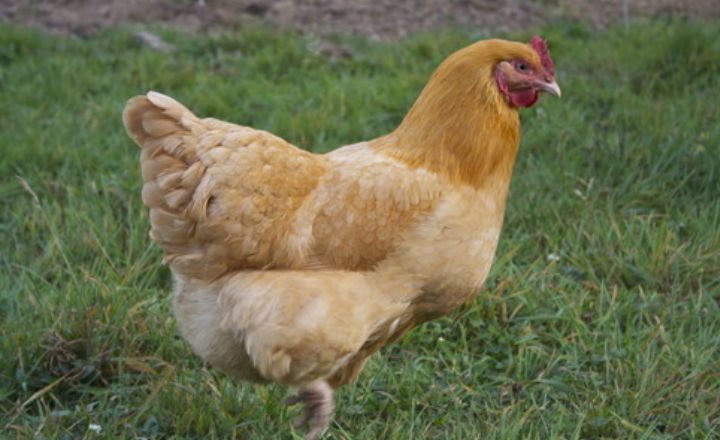
When it comes to outdoor accommodations, allocating 10 square feet per bird in an enclosed run is ideal for promoting both health and happiness. Buff Orpingtons relish space to roam and engage in natural behaviors, which becomes increasingly important on sweltering summer days that can reach upwards of 90°F.
Providing shaded areas or access to cool water helps mitigate heat stress, ensuring your flock remains lively and productive under the sun’s intensity.
Investing in proper housing not only enhances the comfort of these delightful birds but also contributes significantly to their overall health and egg production quality over time.
Are Buff Orpington Chickens Right For You?
Buff Orpington chickens can be an excellent choice for many backyard poultry enthusiasts. Known for their gentle and friendly disposition, they are particularly well suited for families with children, making them a popular option for those looking to introduce kids to the joys of chicken keeping.
Their calm nature allows them to coexist peacefully with other breeds and pets, creating a harmonious environment in your yard.
In addition to their temperament, Buff Orpingtons are hardy birds that thrive in colder climates due to their dense feathering. They are also known for their strong egg production, averaging around 200 to 280 brown eggs per year.
These dual purpose birds provide a good amount of meat, making them a practical choice if you’re interested in both egg laying and meat production. With minimal health issues reported, Buff Orpingtons can be a reliable addition to your flock!
Conclusion
The Buff Orpington chicken breed stands out for its gentle temperament, hardiness, and excellent egg laying capabilities. These birds are not only a beautiful addition to any backyard flock with their striking golden feathers but also provide reliable companionship for both novice and experienced poultry keepers.
Their adaptability to various climates makes them a practical choice for diverse environments, ensuring that they thrive in different settings. With their calm nature and friendly disposition, Buff Orpingtons can enrich your homestead experience while contributing to your sustainable living goals. Consider adding this remarkable breed to your flock and enjoy the many benefits they have to offer!
FAQs
What are Buff Orpington chickens known for?
Buff Orpington chickens are known for their friendly temperament, excellent egg-laying abilities, and beautiful golden-buff plumage.
How many eggs do Buff Orpingtons lay per year?
On average, a Buff Orpington hen can lay between 180 to 280 brown eggs per year, making them reliable layers.
Are Buff Orpingtons good with children?
Yes, they have a calm and gentle nature, making them great companions for families with children.
What is the ideal living environment for Buff Orpingtons?
They thrive in a spacious coop with access to outdoor space where they can forage. They prefer moderate climates but can adapt to various weather conditions.

